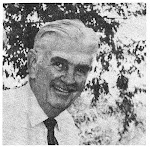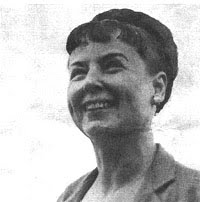Writers are regularly told to write what they know. This was a fundamental in Holling’s writing and illustration, which more often than not was built on the basis of personal experience.
I was struck by this again in reading Hazel Gibb Hinman’s thesis The Lives and Works of Holling Clancy Holling (1958).
As a boy, Holling Clancy (his surname at birth) was raised in Jackson County and Au Sable in northeastern part of Michigan. Au Sable was populated by French-Canadian, Scandinavian and native American lumberjacks. You’ll remember that Minn, the turtle in Minn of the Mississippi was caught and befriended by Au Sable Indian boy.
Hinman says it was from boyhood experiences like this that Holling learned “the difference between the cloven ox hoof and the solid hoof of the horse, much as in the marginal sketches in the Book of Cowboys.” That difference was why oxen were used for pulling tree stumps and wouldn’t get mired in the mud. This is the sort of natural history most children today would not know if it weren’t for Holling’s books.
For reasons of his father Bennett’s health, the family moved to the ancestral farm in Holling Corners. Summertime in Holing Corners allowed young Holling the chance to listen to his grandfather’s hired hand, Arza Earl. Arza appears in Tree in the Trail as “the owner of the leather shop from whose porch is viewed the main street of Independence, Missouri: ARZA EARL MAKES HARNESS YOUR WORST MULE CAN’T BUST” is the dark sign at the top of the full-page illustration (above) in chapter 12.
The farm life is immortalized time after time in Holling’s writing. Papa Bennett, as his father was known, had a giant iron kettle he used for cooking feed for the hogs. It was so big, Hinman reports, that three or four children could hide in it when playing hide-and-seek. Once, after cleaning the kettle, Holling curled up in it and took a nap, Hinman says. This experience appears in Seabird as an exhausted Ezra finished cleaning the kettle used for cooking down the whale oil and “slid headfirst into an empty try-pot. His polishing rag gave the iron a silver sheen. Then he flopped into the other kettle…. Ah! That try-pot felt so warm, so snug—.” (page 26)
When the Clancy family moved to Holing Corners, the household good were packed in finely made wooden crates. A cousin later used the boxes to construct a fishing shanty on nearby Pleasant Lake. This idea contributed to Paddle-to-the-Sea as the little canoe is trapped in the ice. Fishermen pulling their shanties on runners freed Paddle-to-the-Sea and sent it on its way.
A biographer could have a field day tracking all of the references in Holling’s life to see where they appear in his books — a puzzle that still invites the close reader.
The farm life is immortalized time after time in Holling’s writing. Papa Bennett, as his father was known, had a giant iron kettle he used for cooking feed for the hogs. It was so big, Hinman reports, that three or four children could hide in it when playing hide-and-seek. Once, after cleaning the kettle, Holling curled up in it and took a nap, Hinman says. This experience appears in Seabird as an exhausted Ezra finished cleaning the kettle used for cooking down the whale oil and “slid headfirst into an empty try-pot. His polishing rag gave the iron a silver sheen. Then he flopped into the other kettle…. Ah! That try-pot felt so warm, so snug—.” (page 26)
When the Clancy family moved to Holing Corners, the household good were packed in finely made wooden crates. A cousin later used the boxes to construct a fishing shanty on nearby Pleasant Lake. This idea contributed to Paddle-to-the-Sea as the little canoe is trapped in the ice. Fishermen pulling their shanties on runners freed Paddle-to-the-Sea and sent it on its way.
A biographer could have a field day tracking all of the references in Holling’s life to see where they appear in his books — a puzzle that still invites the close reader.
Thursday, October 24, 2013
Subscribe to:
Post Comments (Atom)


.jpg)







No comments:
Post a Comment